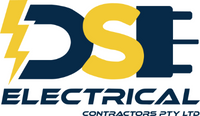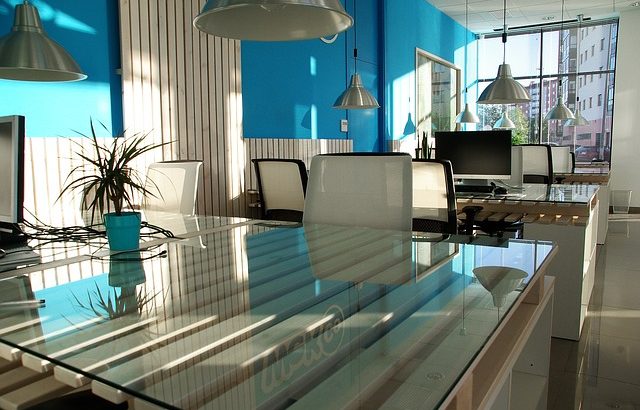Office Lighting and How It Affects Your Health
One of the most important features that offices should have is proper office lighting. It is one vital factor that contributes highly to production and manner of people within the area. Bad illumination abets on lowering accuracy and concentration of employees. It will make them feel exhausted and bored. Improper lighting also affects posture. With indecent lights, one is required to achieve rough positions in order to get a good look and will, in due course, affect the back and the neck.
Read Tips for Cutting Power Bill in Your Business.
The most commonly damaging and frequently taken for granted issue is harming the eyes through improper and inadequate lighting. Too dim and too harsh office lights are the most common lighting concerns that affect employees, their health and their levels of productivity. Well-designed power and lighting schemes can help significantly in obtaining greater resources and profits. Properly lit rooms are more pleasurable and relaxing to work. Dark spaces create an unsanitary working environment that is overcrowded, stressful and depressing and can greatly affect the work satisfaction of employees. Bad lighting can directly affect the performance of a business.
How Office Lighting Can Greatly Affect the Health of Office Personnel
Faint lighting and harsh lighting are perceptibly the top culprits. When there is insufficient light, the eyes are forced to work much harder in order to see, thus resulting to eye strains, deteriorating visions and headaches. It can affect employee’s focus and may trigger drowsiness. Badly lit lights can also prompt mood swings because it can disturb the body’s release of hormones such as melatonin. Too much light makes it more difficult for the eyes to focus and can also cause eye strain and migraine headaches.
For the most part, office lighting is synonymous with artificial lighting. Artificial lighting is made up of visible lights, ultraviolet and infrared radiations. They are said to have emission levels that are detrimental to the eyes. Most artificial lighting sources produce flashes and glares that can cause blurred vision, eyestrain, dry eyes, and headaches. Artificial lights can also cause harm to the skin. Some musculoskeletal injuries particularly spinal illnesses which are obtained from having discomfited postures while straining to read under dark illumination are obviously linked to having poor lighting conditions. Some accidents are also caused by not sensing and properly estimating shape, proximity and depth of objects and spaces due to gloomy lights. The most damaging parts, however, are the ultraviolet and blue components of lights. Although there have been no fatal risks that artificial lighting is related to health problems, people that have special conditions and are remarkably sensitive to light may found it difficult to work with synthetic lighting.
What Are the Smart Alternatives to Have Proper Office Lighting?
Offices should have good visual environment that is composed of sufficient illumination. Overhead lighting should be appropriately adjusted to avoid glares and flickers on monitors that can adversely affect the eyes. If they are required to be dimmed, make sure that they are not too dark and that the space is still amply illuminated. The walls should also be applied with a matte finish to prevent glare. Brightness and contrast of computer monitors should be well adjusted and these monitors must be placed in directions that are away from lights and windows.
Smart lighting solutions are excellent alternatives for office use. They are particularly easy to set up, programmed and incorporated into existing lighting systems. Although some have exorbitant initial costs, they remarkably offer big savings in energy bills in the long run. Smart lighting provides multiple lights that cater to the needs of the office and their variety of visual tasks which cannot be met by a single lighting fixture. Having the ability to control multiple lights tolerates only the ones needed for the current tasks. During meetings, desk lamps can be dimmed while overhead lights are in jovial and brighter setting. However, when working with papers and documents, desk lamps can be used while the overhead lights are dimmed. When the workplace has several smart lighting fixtures, employees also get to avoid eye strain.
Natural lighting is also a superb alternative for office use. An open plan layout that maximizes the use of natural light is suitable because it can highly affect the mood, perception, and productivity of people inside the workplace. Employees will have a happier, more fruitful, and healthier environment when their desks are positioned by the windows. Having to see the outdoors and getting enough natural light will definitely provide them a satisfactory working experience. When connecting with the outside world through positioning by the windows is not possible inside your office, use lamps that mimic daylight to still get the benefits of the sun while indoors. These lamps will keep you energized and animated.
It is very important to have a proper lighting installed in the workplace because it will not only provide illumination but will highly affect the attitude and productivity of the people within the office. Moreover, a productive business should prioritize the health of its constituents. If you opt to have a cheap and deficient lighting just to cut on expenses, chances are, you will eventually lose future earnings that you should have won through a productive working environment. Look around your offices and assess if you still have too dim and too harsh lighting system. Maybe, it is the right time to alter the lights and upgrade them into better alternatives. If you need more information or have questions about lighting, give me a call on 0403 026 531.


Recent Comments